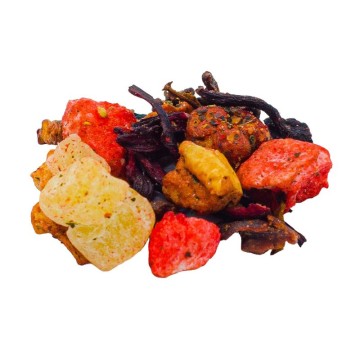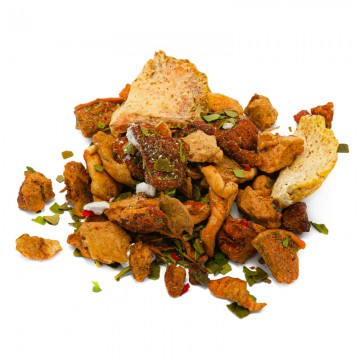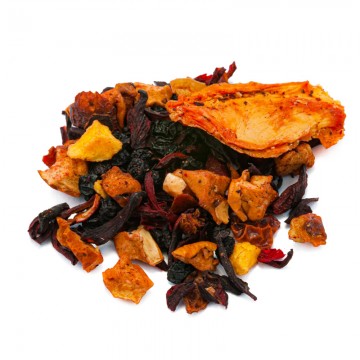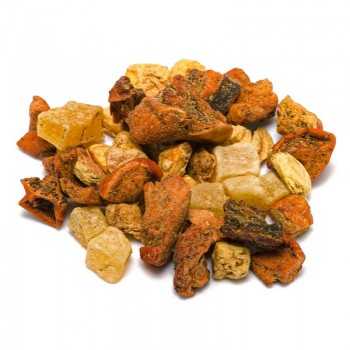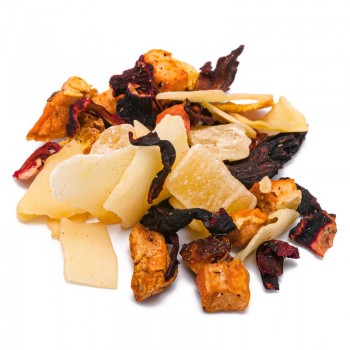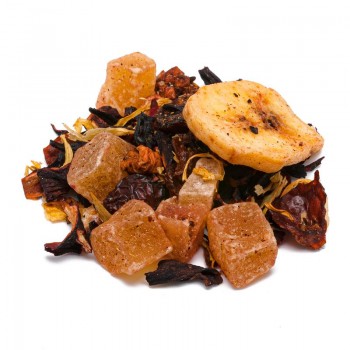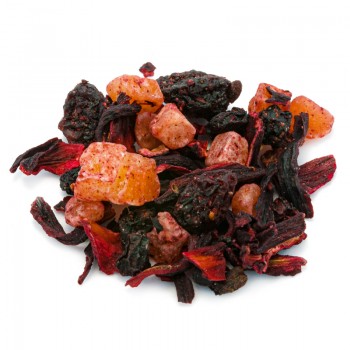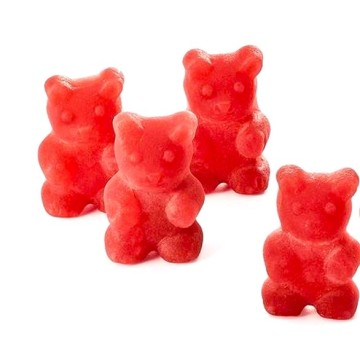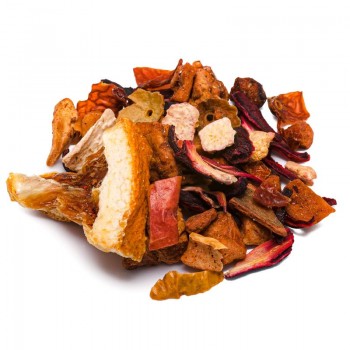With this invigorating blend, you can enjoy a real infusion of energy, accompanied by the exquisite exotic flavor of mango, coconut and other ingredients. It's a perfect way to start the day, evoking distant, Caribbean places with aromas that combine hibiscus, tropical fruits and citrus. These sweet, slightly tart and lively notes are combined with the soft nuances of marigold and cornflower for a floral finish. Also ideal as a cold fruit infusion in summer, thirst-quenching and invigorating when the heat hits. Perfect mid-day refresher. The satiating consistency of coconut, mango, papaya and apple makes this drink excellent to accompany a detox and slimming diet.
Mango and coconut infusion: properties and benefits
The healthy benefits that reach our body when enjoying this drink are in the properties of the fruit ingredients and hibiscus. Mango is a tropical fruit that provides us with a high content of mineral salts, vitamins and other trace elements. It is known as a powerful antioxidant, which gives well-being to the cardiac circulation and the heart – vitamin C helps the correct formation of collagen and blood vessel tissues. Its antioxidant qualities, therefore, also help the well-being of the skin. Mango is an excellent source of magnesium and potassium which can support regular blood pressure and nervous system health. While calcium and iron help against exhaustion from heat or tiredness.
Mango is considered "tonic" due to its supply of B vitamins, which stimulate attention and improve resistance. These fruits are a good source of protective compounds with antioxidant properties such as gallotannins and mangaferin. Various phytochemical substances in mango have been studied for their gastroprotective effects. The contrast to irritations of the digestive system of this mango infusion is enhanced by the presence of papaya, apple and orange peel.
The other essential element is coconut. Symbol of summer, fresh, it is a fruit rich in "good" fatty acids for heart health, vitamins and minerals such as calcium and magnesium. It represents the ideal fruit to combat the heat especially in combination with mango and orange peel. On a tonic level, its numerous vitamins allow an effective action to counteract muscle weakness, while it also has a useful relaxing action without weakening. The mineral salts contained in coconut infusion allow you to replenish those lost due to sweating, and the substances present in coconut are considered useful for the well-being of bones and teeth. Furthermore, it has an advantageous purifying action to eliminate toxins from the digestive system and promote digestion, together with the other ingredients. Both components of this infusion form a formidable combination to taste, also enhanced by the papaya and the other elements of the mixture. This fantasy of flavors and colors that evokes summer and exotic scents also becomes an excellent energizer thanks to the supply of vitamin C via hibiscus, rose hips and orange peel.
Origins and history of cultivation
Mango is an exotic fruit native to India, which today grows in all tropical and subtropical areas of the world. For centuries the mango has been linked to Hindu culture, where it appears in many legends as a sacred tree of the Hindus. Its leaves were used to create garlands in temples, decorate ritual and wedding banquets. From India, in the 4th BC the mango spread to East Asia, then to Africa in the 10th century via Arab merchants.
It arrived in South America via the Portuguese in the early seventeenth century. It was they who gave the fruit its current name, derived from the Indian Tamil phrase maangai, which in Portugal became "manga" and then mango. In Europe it is cultivated in Spain (Andalusia) and Sicily, so it is found on our tables seasonally. The coconut plant is the coconut palm, one of the most important plants for many populations. Born in tropical climates, it has spread throughout the world in areas with this climate.
On its origin, which is not easy to define, various scholars have proposed different theories: Central America, Polynesia, Malaysia, Fiji Islands. Coconuts are the main sources of fats and proteins for many countries, where the plant is exploited in its entirety to market derivatives. Known in medieval times by Marco Polo, who called it nux indica (Indian nut) in 1280 when he reached Sumatra, it was later found by European explorers in the sixteenth centuryto along the coasts of Central and South America. They called it Coco, which means "monkey face" - three notches on the hairy fruit, resembling the eyes and face of a monkey.
Fruits and flowers
Mango comes from the Mangifera indica plant of the Anacardiaceae family. Originally from southern Asia, it is now grown in other countries including the United States, Mexico and the Caribbean. The evergreen plant has pointed, shiny leaves and pinkish-white or yellowish flowers. Not all of them bear fruit – they are few compared to flowers. The fruits usually take three to six months to ripen, depending on the variety.
The fruits are tropical stone fruits, and the skin varies in color from yellow to green to red-green. They give soft and yellow pulp, and appear in variable, even considerable, sizes. The coconut tree is the Cocos nucifera palm, it belongs to the Arecaceae family. It is the only species of the Cocos genus, and is divided into tall or dwarf palm. It grows up to 30 m in height, with leaves 4-6 meters long, and fruits (coconuts) which weigh about 1.5 kg at full size. The fruit is actually a drupe, not a nut, and is distinguished by its endosperm which contains a large amount of water (coconut milk). Immature nuts are harvested for drinking coconut water content. Ripe nuts, however, can be transformed into coconut oil, coconut charcoal obtained from the shell, and coconut fiber from the fibrous husk.
The Carica papaya is a not very large tree of the Caricaceae family. It shows little branching and in some cases reaches up to 10 meters in height, with a warm or temperate temperature. The flowers grow continuously, even at the same time as the fruits. The color of the fruits can have various shades between green, yellow, orange or pink. Hibiscus flowers derive from the plant Hibiscus sabdariffa L. of the Malvaceae family. It is used as a vegetable and as an alternative medicine remedy using its useful parts which include leaves and tender shoots, stems, calyxes and seeds. The dried flower calyxes create the famous hibiscus tea. The Rose is a perennial plant of the Rosaceae family. There are over three hundred species and thousands of cultivars of this plant, famous for its flowers. They change in shape, size and color from white to yellow and red. Most species are native to Asia and the Rosehip bears a fruit called rosehip. The Malus domestica plant of the Rosaceae family gives us apples.
It is a tree native to Asia, now widespread throughout the planet. The fruits vary in color and in many varieties, and have been used in human nutrition for millennia. The orange tree is Citrus sinensis, belonging to the Rutaceae family. Many scholars think that Citrus sinensis is a hybrid between the pomelo and the mandarin, born in China. Over the centuries, many varieties of orange have been developed, and sweet oranges are distinguished from bitter oranges. Calendula officinalis is a herbaceous plant grown as an annual, of the Asteraceae family. It grows up to about 70 centimeters, with yellow-orange flowers, which is why it is also called fiorrancio, and are known for their beneficial and soothing cosmetic properties.
Nutritional values of mango and coconut infusion
The infusion contains several micronutrients including minerals such as potassium, magnesium, copper, manganese and selenium. It has a content of B vitamins, beta-carotene, vitamins C and K. How to use the ingredients in the infusion
The infusion is obtained by placing approximately 3-5 grams of the mango and coconut mixture with water at 100°C in a cup (250 ml). Leave to infuse for 10 to 12 minutes before drinking. Add honey or sugar, if desired.
Mango and coconut infusion: side effects and contraindications
It is necessary to respect the recommended doses and not exceed the consumption of the infusion for too long periods. Excessive intake can cause diarrhea, stomach acid, headache and nausea.

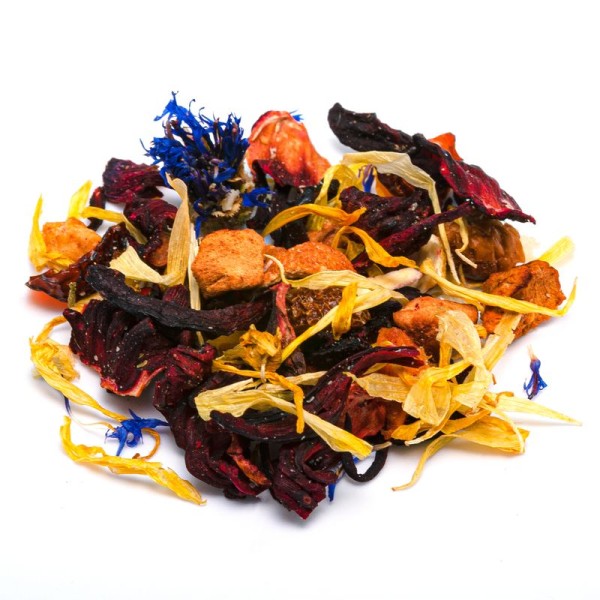







 No reward points for this product.
No reward points for this product.

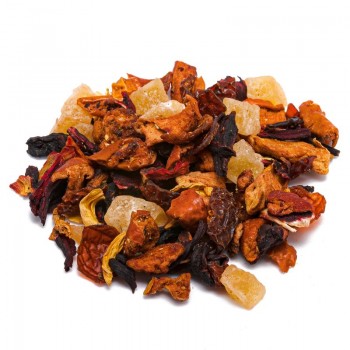
![infuso pesca melone [Natura d'Oriente]](https://www.naturadoriente.com/3535-home_default/infused-peach-melon.jpg)
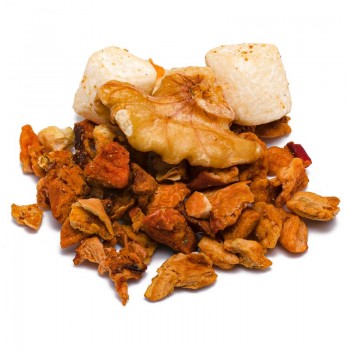
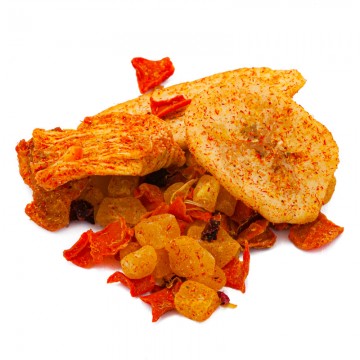
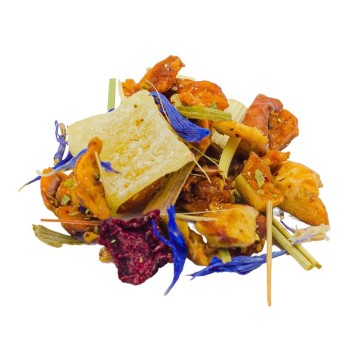
![infuso lime mirtilli rossi [Natura d'Oriente]](https://www.naturadoriente.com/3551-home_default/lime-infused-cranberries.jpg)
